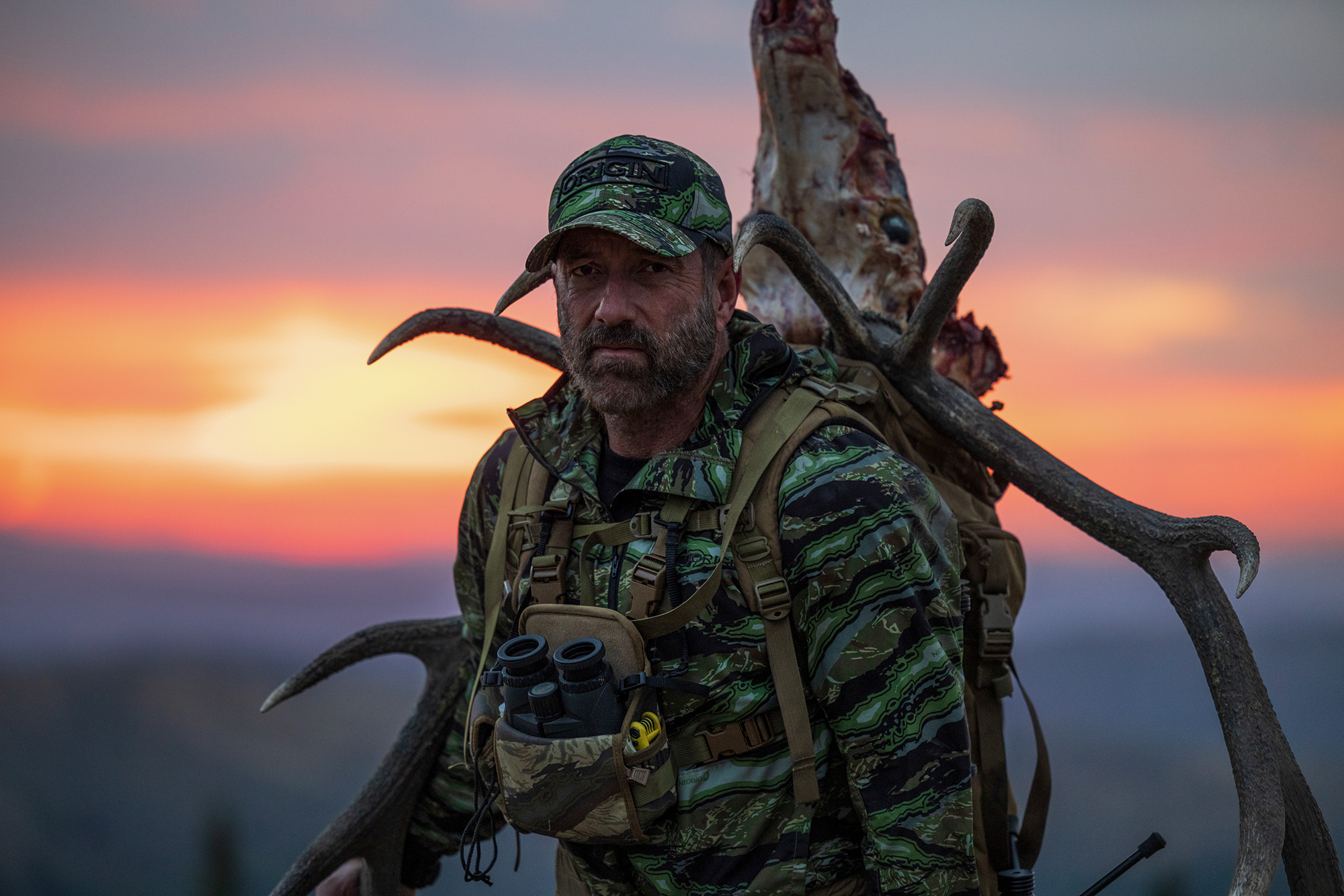We may earn revenue from the products available on this page and participate in affiliate programs. Learn More ›
ONE AFTERNOON in 2011, Pete Roberts was sitting in his basement listening as a manufacturer living halfway around the world told him over a video call that ripping off Roberts’ jiu-jitsu uniform designs and selling them to companies in Europe was not only perfectly legal, it was the game. Roberts felt as most people would upon hearing he’d been—and likely would continue to be—swindled: furious.
So Roberts hung up on the man, walked upstairs to tell his wife something needed to change, and within a week began marking trees at his home in rural Maine for logging.
Roberts planned to build a factory. Then a company. Then a movement. And nothing would be outsourced overseas. No manufacturer would take his product, slap a different logo on it, and sell it to someone else. Everything—from the thread to the buttons to the fabric—would be made at home, in the United States of America.
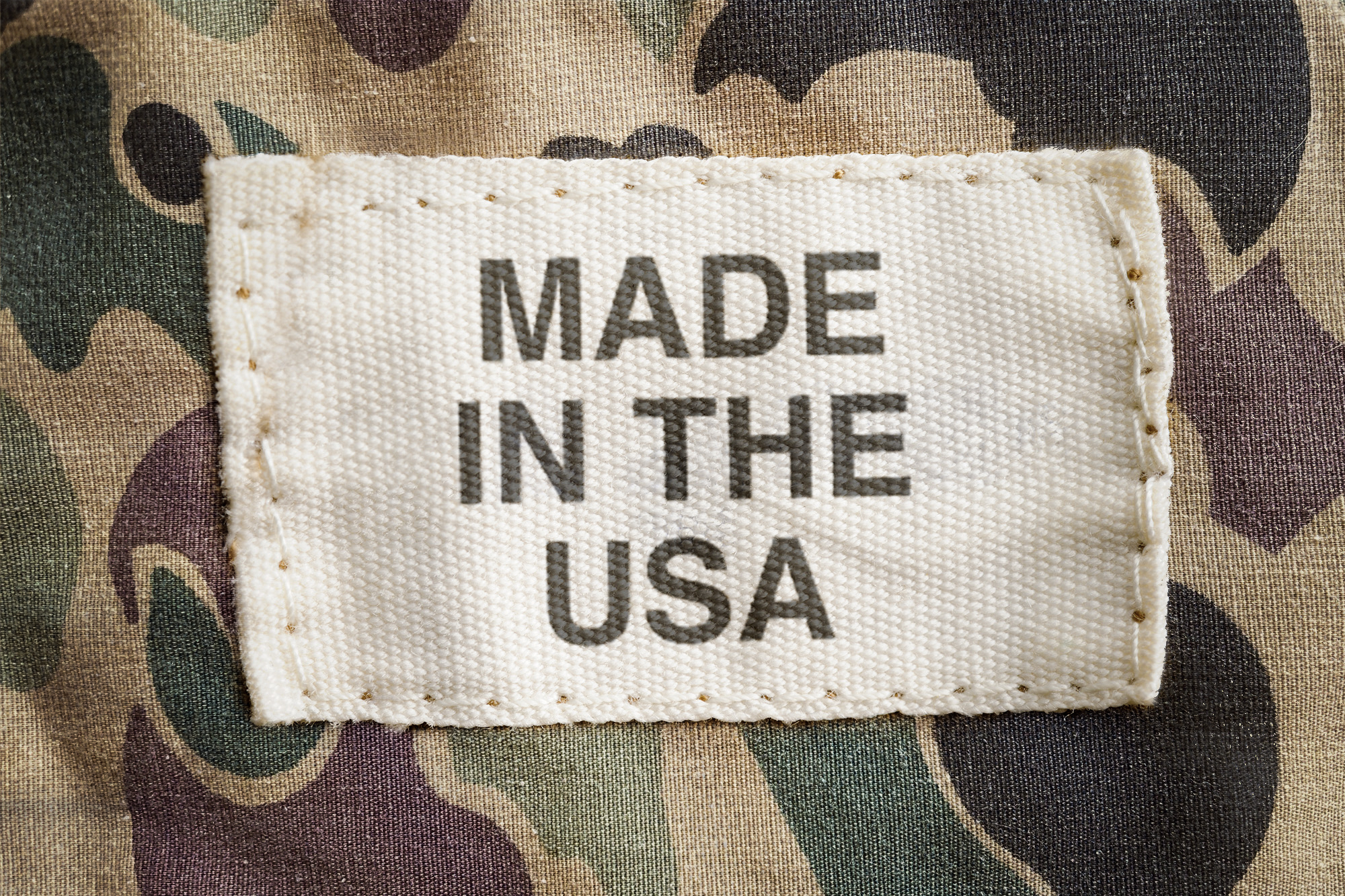
A Domestic Origin Story
Shortly after he cut those first trees down, Roberts established Origin, which manufactures premium jiu-jitsu gis for training and competition.
“It was kind of a crime of passion,” Roberts tells Outdoor Life about logging his own timber. “I didn’t really have a business plan. I got a bunch of friends and family together, they started cutting these trees down and poured a slab and raised this old-school timber frame kind of barn. I found two old LL Bean Singer sewing machines from the ‘40s and ‘50s. We had somebody work on them, bring them back to life, and we just started sewing stuff.”
By 2017 the business began to take off. Roberts partnered with former Navy Seal commander and author John “Jocko” Willink, and moved into a 20,000-square-foot brick building that had been a fall-out shelter, where they manufactured denim and boots. In 2021, he acquired an existing plant in North Carolina, then a second one this year. And this September, Roberts and Willink worked with Under Armor co-founder Kip Fulks and bowhunter Cameron Hanes to launch a new line of camouflage made—you guessed it—entirely in the USA.
“[Roberts] developed these jeans and these boots in this kind of blue-collar mentality, and I’m like, Bingo, hunting,” says Fulks. “Hunting is a close adjacency to the patriotism of ‘Made in the USA.’ It just flat-out makes a ton of sense.”
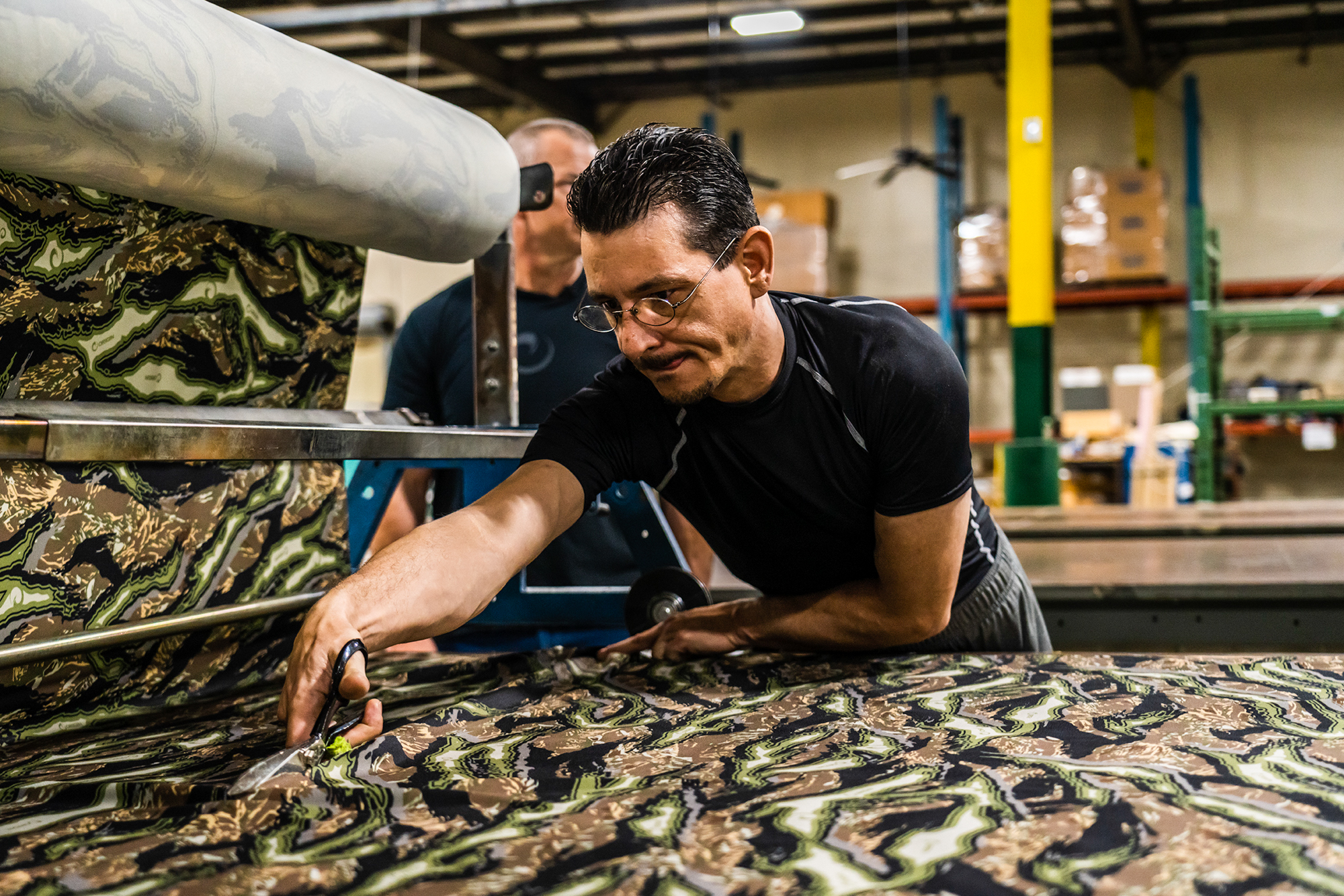
Camouflage made in the U.S. might not sound novel, but it’s a rare product. If hunters are anything, as Fulks points out, they’re a patriotic bunch, emblazoning the stars and stripes on truck sides, bumper stickers and gun stocks. But look at the tags in your new pants, wicking shirts, and down jackets, and you’ll find very few modern-made garments that weren’t made overseas. While Origin isn’t the only company making camo in the U.S.—Forloh and Voormi also manufacture stateside—the company is coming to the public with a splash that includes big names, a high-profile social media presence, and the bootstraps, made-in-America origin story that consumers can’t seem to get enough of.
Roberts and Fulks say domestic production is a matter of principle: Clothing manufacturing can and should return home to the U.S. Other camo companies, like Kuiu, say it’s about the final product: If a Japanese company makes the best waterproof and breathable fabric in the world, then they’re going to source their materials from a Japanese company.
Aaron Snyder, co-owner of Kifaru, says it’s good to see someone else joining the made-in-the-USA game, though he’s reserving final judgement until he sees Origin’s camo in person. (The camo has been available for pre-order, but most consumers have yet to get their hands on the gear.)
“I think that they have an uphill road to hoe because it is a difficult thing to make clothing in the U.S. I think it can be done. We’re doing it and have been doing it for 30 years,” says Snyder. “Only time will tell what that final product will be and what the feedback will be from the end consumer. Are they going to come through and buy it? Is it going to be high quality?”
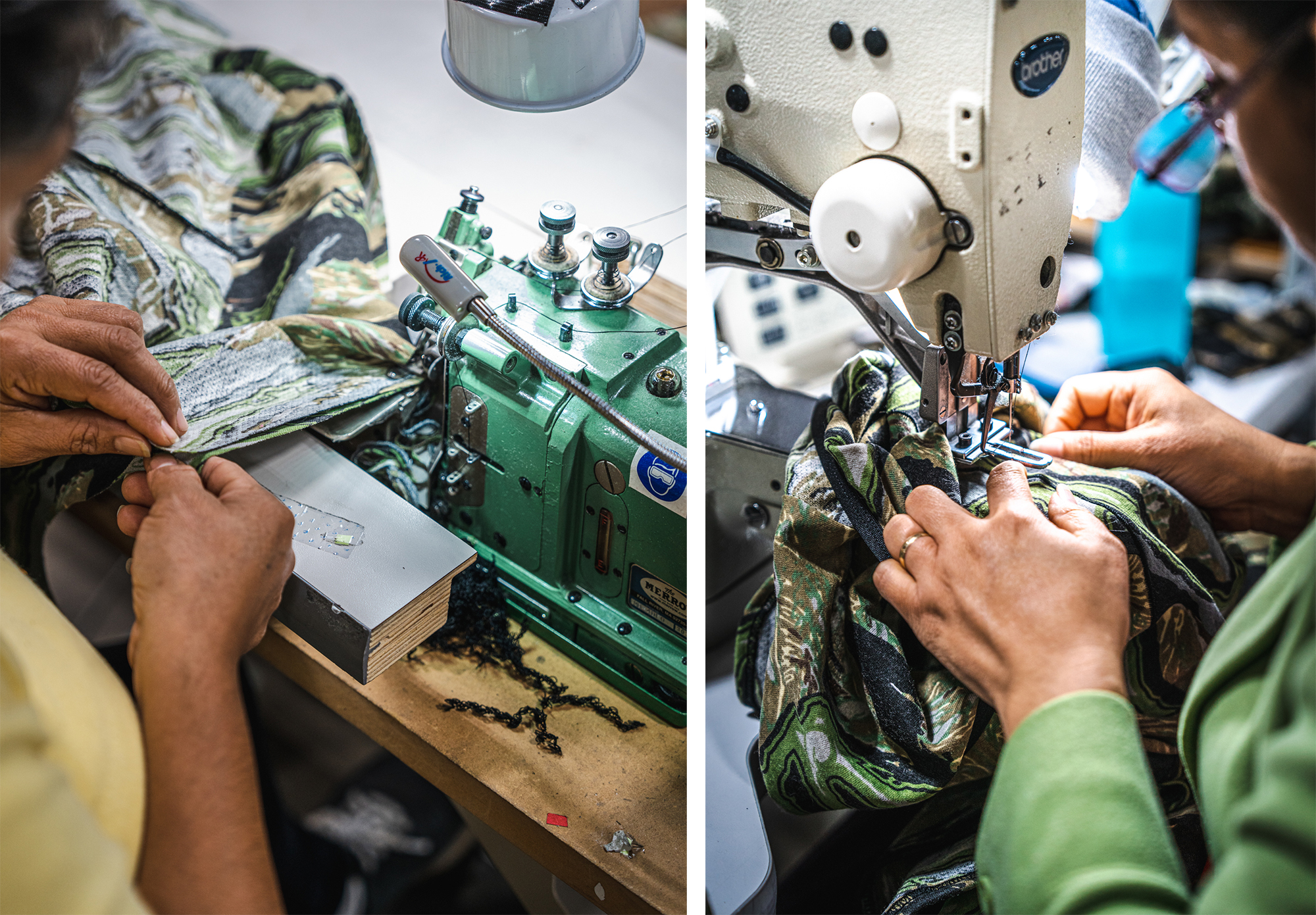
A Lost Art
Roberts is not a garment expert by profession—not at the beginning of his career, at least. The Mainer owned a small media company before the 2008 financial crash left him and his wife, who worked at their local school district, with nothing but their home.
Freshly unemployed, Roberts allowed himself to pour his attention into jiu-jitsu, a passion and therapy of his. It wasn’t until he started spending so much time on the mat that he noticed the gear hadn’t changed much in a hundred years: “It was like watching NFL football, and they’re still wearing leather helmets.”
He could do better, Roberts figured, so he developed concepts which would change the way the athletic clothing should work, considering everything from biomechanics to fibers. When he looked for manufacturers in the U.S., he came up short.
“Everywhere I turned I hit a roadblock,” he says. “Finally, I got an answer from somebody and they’re like, ‘Yeah, if you spend one million with us, we can weave this fabric for you.’”
So he went overseas—like most everyone does—to countries like Pakistan, where the clothes could be made for relatively cheap and imported with few tariffs. The gi sales proved modestly successful, but the quality was poor, and the whole thing felt wrong to him. Then he realized his manufacturer was taking his designs, slapping a different logo on them and selling them in Europe and even in the U.S.
The U.S. wasn’t always a manufacturing black hole, but the transition from garment production on American soil to global in the 1990s was quick, efficient, and almost entirely due to trade agreements with other countries that opened the door to cheap manufacturing almost everywhere but here.

“If you look at old Champion sweatshirts and stuff, apparel from like the mid-’80s and early ‘90s, a lot of that stuff was still made in the United States, so it’s not like stuff’s been made over in China for all that long,” says Luke Kjos of Boss Shotshells, which sources its Boss merchandise from American manufacturers and has a hell of a time doing so. “It just went really quickly. And when it went, it was gone.”
Business owners began to outsource everything—from yarn to dye houses to the factories themselves—overseas in their search for more affordable raw materials, cheaper labor, fewer operating expenses, and less complex regulations.
Retooling for a New Era
Roberts and one of his original partners Andre “Dedeco” Almeida, were all in, not just on making clothes, but rethinking American manufacturing completely.
“Origin’s logo [represents] the wave of freedom. It’s the wave of reshoring our jobs and machinery, restoring the communities, and reclaiming what’s been lost,” he says. “It’s been a reclamation project and a renaissance of sorts.”
Just like American Pickers, the History Channel show about scouring barns and garages for valuable treasures, Roberts and his team went everywhere looking for machinery they could bring back to life. They found a loom in an abandoned mill in Lewiston, Maine, the only one in the factory that hadn’t been shipped to China or India.
“This old woman was going to put it in the museum,” he says. “I told her I wanted it.”
He bought the loom, spent 40 hours just cleaning the lanolin off it, and found someone who still knew how to use it.
“And we just started to pass the knowledge of how to cut and sew and weave fabric into garments,” Roberts says, who was the first one in his business to learn those skills.
Roberts knew his company was making a product consumers would want, so he filmed a video of one the gis being made, and threw it up on YouTube and Facebook. He wanted his future customers to know exactly where their clothes came from. Revenue from gi presales enabled Origin to buy a loom and another sewing machine. He and Almeida were hand to mouth in those days, but they made it work.
In 2017, they had 12 employees. Today, Origin makes jeans, leather boots, hoodies, base layers, belts, and other accessories, employs more than 400 people, and owns four factories in three states. And for the last three years, they were ranked in the top 500 on Inc 5000’s list of fastest growing businesses.
“We’re kind of like the tip of the spear of this renaissance of manufacturing, which obviously started in New England with the Industrial Revolution,” Roberts says. “And it’s kind of a second chance at it, and I think we can do it better.”

Sizing Up the Competition
Making clothing—or anything else for that matter—in the U.S. requires more than some final assembly. The statement comes with clout, and regulations.
According to the Federal Trade Commission, a product with a “Made in the USA” label “without qualifications or limits on the claim,” must be “all or virtually all made in the U.S.” The federal agency then goes on to describe various scenarios where a product may include something foreign but still count as made in America.
If a gas grill, for example, is made of almost entirely American products and assembled in the U.S. but the tubes and knobs are imported, it can still carry the Made in the U.S. label. Even though Tiffany (which the FTC uses as an example) makes most of its fancy lamps domestically, it imports the relatively inexpensive base. Because the base comprises too much of the actual lamp, Tiffany cannot claim their lamp is “Made in America.”
If that sounds like a gray area, it is—and some brands use it to their advantage.
The Lions Not Sheep company and its owner recently faced more than $210,000 in fines by the FTC for allegedly removing “Made in China” tags and replacing them with “Made in the USA” labels. Owner Sean Whalen told USA Today that the company did not agree with the ruling.
Of the relatively limited clothing still being made in the U.S., most of it is manufactured for the military courtesy of a bill called the Berry Amendment. The permanent adoption of that statute in 1994 restricts the Department of Defense from using money to buy fibers, fabrics, and other textiles from overseas.
“If not for the Berry Amendment, it would have all gone overseas,” says Bryan Boulis, president of Ocean State Innovations, one of the remaining major textile manufacturers in the U.S.
The Origin team began analyzing military fabrics and working with people like Boulis to see how the materials available here could be retooled to fit their needs. Wool used in fighter-pilot gloves, which are designed to keep pilots’ hands from getting cold, wet, and damp, became the base for Origin’s Stealth Wool Jacket, Fulks says. The pants use low-profile tactical pockets inspired by those found in the Navy. Even the print, which they’re calling Origin Raptor camo, is a throwback from Vietnam War camouflage with a modern twist courtesy of Fulks’ experience studying camo patterns at Under Armor.
“It’s a really cool camouflage that has this nostalgic feel to it,” Roberts says.
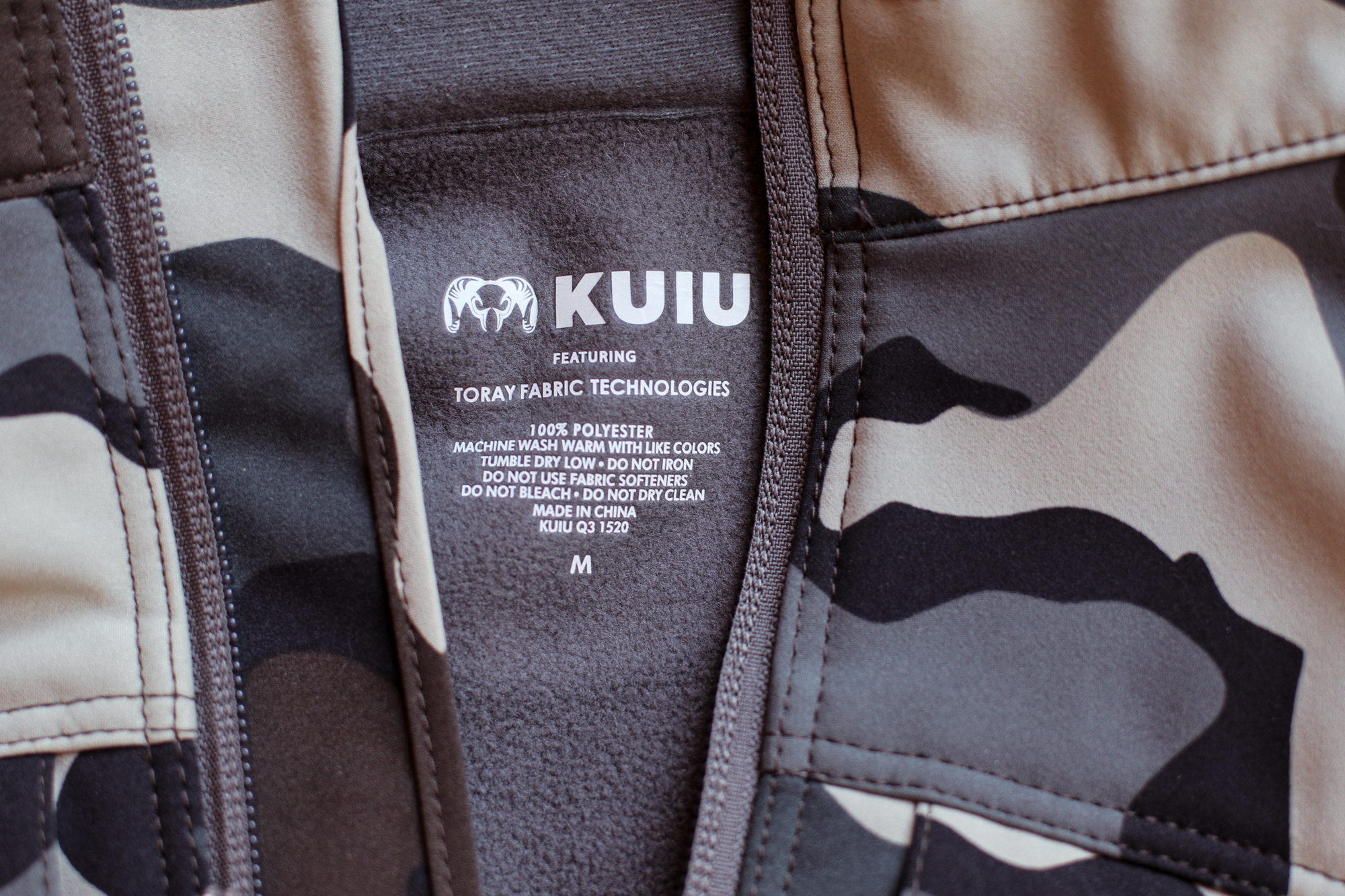
That’s all fine, says, Jason Widaman, Kuiu’s vice president of supply chain, but making an entire, high-end camouflage line in the U.S. right now just isn’t realistic. Kuiu was founded in 2011 and initially used a small factory in Vancouver, Canada, but quickly ran into capacity constraints.
“After our first year, we went back to them and said, ‘This is what we want,’ and they’re like ‘There’s no way we can produce that quantity,’” Widaman says. “We searched to try and find more capacity in the U.S., but it’s just very limited on pushing the envelope on lighter and faster [hunting clothing].”
Kuiu sent a team overseas looking for new fabrics and factories to cut and sew. They found the best Merino wool comes from New Zealand, and the best lightweight, high performance, breathable fabric called Primeflex comes from a Japanese company called Toray. Toray is actually a giant chemical company with a large apparel division that’s known as the “industry leader that nobody can use because of the cost,” says Widaman. “They do things light. They can do things that dry faster.”
Because of the way Toray produces its technical fabrics, it doesn’t need to add elastic or Spandex to their products. Spandex adds stretch, which is welcome in activewear like hunting camo—but it also adds weight. The expense of such a high-tech Japanese-sourced fabric is why a pair of Kuiu’s Chugach rain pants still cost $259 even though the California-based company is selling directly to consumers.
And why doesn’t Kuiu just import that fabric into the U.S. instead of cutting and sewing it in Vietnam? Because of import tariffs, he says.
“If I wanted to bring fabric into the U.S. from, say, Japan or Taiwan, most of it would be taxed at 32 percent duty,” says Widaman. “The way the duties are written, it is cost prohibitive for me to bring in raw materials to cut and sew.”
To avoid those hefty fees that would ultimately be passed along to consumers, Kuiu sends its fabric to Vietnam, which has a free trade agreement with Japan and imports the final garments into the U.S. at a lower duty rate, at times in the single digits.

A Nice Ideal, or a Real Movement?
Call him optimistic, but Roberts believes manufacturing can be brought back home.
“The things that we’ve built in America, and our engineering and design, is bar none,” he says. “It’s just applying that same mindset to something that we haven’t been doing for a while. We’ve abandoned the idea that we can do it in textiles and garments, and it’s not the case, we absolutely still can do it.”
For Fulks, it’s not just about bringing jobs home, but about treating workers fairly and safeguarding the environment. He spent much of his career touring factories across the globe for Under Armor and says he has seen the ugliest sides of unregulated overseas manufacturing.
“Why do we have beautiful trout streams in the United States?” says Fulks. “Because we have the Environmental Protection Agency that has done an amazing job of clarifying what is good for the environment and what is not.”
Then there’s cost of labor. Aside from the obvious wage differences between countries in, say, southeast Asia, and the U.S., Fulks also points to safety regulations.
“There’s no OSHA,” says Fulks, rattling off U.S. factory-supplied amenities like extra safety glasses, eye wash stations, and clearly marked fire extinguisher locations. “Do you think there’s a labeled fire extinguisher in a plant in Cambodia? You think they care about those workers? They don’t. Here in the States, we’re bound by federal and state law to provide safe and comfortable workplaces. And that drives costs of infrastructure.”
(Fulks later clarified that “some good places exist” overseas but he’s still seen “some horror stories.”)
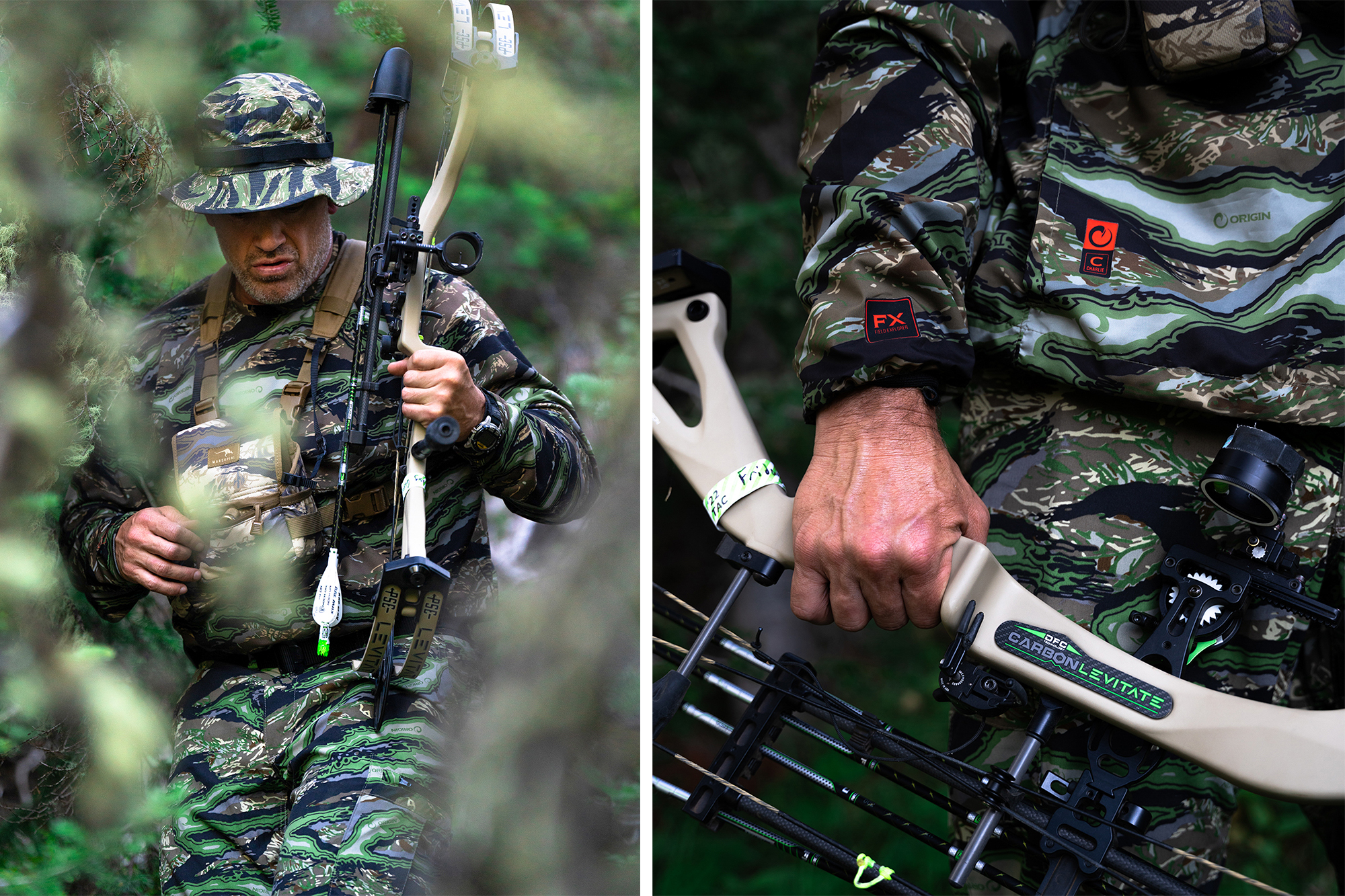
And even Kuiu plans to launch a garment soon made with American fabrics, though Widaman couldn’t say much about it until it’s public. A spokesperson for Sitka, whose pant and jacket labels read “Made in Vietnam,” declined to comment for this story citing “competitive reasons.” First Lite, whose camo labels read “designed in the USA, made in Vietnam,” also declined to comment.
Voormi and Forloh both carry “Made in America” tags on their products. Voormi chief technology officer Timm Smith says they’ve been able to source almost everything they need in the U.S. except fine Merino wool, which comes from Europe, and their socks, which are made in New Zealand. That means some labels will say “Made in the USA with fine imported wool.”
Smith and Forloh’s founder and CEO, Andy Techmanski, say being able to source, cut, sew, and finalize camo in the U.S. comes down to relationships with factories across the country. Voormi has shops and factories in Colorado and Montana, and also works with factories in many other states. Techmanski wouldn’t say where his factories were located, adding that he didn’t want to give away too much information in a finite and competitive business.
“A lot of people are trying to figure out the secret sauce,” he says, citing manufacturing locations from California to New Jersey. “We’re all over the place.”
Luke Kjos with Boss has figured out ways to manufacture some products in the U.S. The company’s Burley hoodie, which is made entirely here, consistently sells out immediately with people waiting to buy another. But he’s running up against the financial frustrations of producing at home. His cut-and-sew costs keep rising for a lightweight fishing hoodie.
“It’s because if you’re trying to do that in the U.S., it’s a little mom and pop shop, not a big factory in China where there’s 3,000 employees and they can put one together for 18 cents,” Kjos says. “The one I’m doing, she quoted me $19 per garment to sew here. If I’m looking at my competitors’ lightweight fishing shirts, they’re not even into the whole garment for $19.”
Snyder figures Kifaru would be 60 percent more profitable if it manufactured 70 percent of its packs, bags, and clothes overseas and then “throw a flag on.” He’s not sure high-end camo—the kind that’s lightweight, breathable and stretches four ways—could be made here. Kifaru’s Lost Park pants and parkas are made in the U.S. because they use insulation that was created for the military and an outer shell material that was repurposed from sleeping bags.
Tariffs, labor shortages, and lack of infrastructure aside, both Snyder and Kjos agree that the success of 100 percent manufacturing of camouflage in the U.S. will ultimately come down to whether hunters who want gear made in the U.S. are willing to pay the higher prices associated with it.
“It’s not that we can’t, it’s that … I’m somewhat of a skeptic on that everyone will complain about wanting everything made in America and the moment they have to actually pay for it, they go to Walmart,” Snyder says. “That’s a big commitment for multiple people to make not knowing what the consumer will actually do.”
Ironically, the global supply chain issues caused by the pandemic could help domestic manufacturing, Kjos says. The longer it takes for container ships to move across oceans, the more impatient companies and consumers here get. Add to that a skyrocketing cost in shipping, and our collective “hand might be forced to try and figure out manufacturing here” in the U.S.
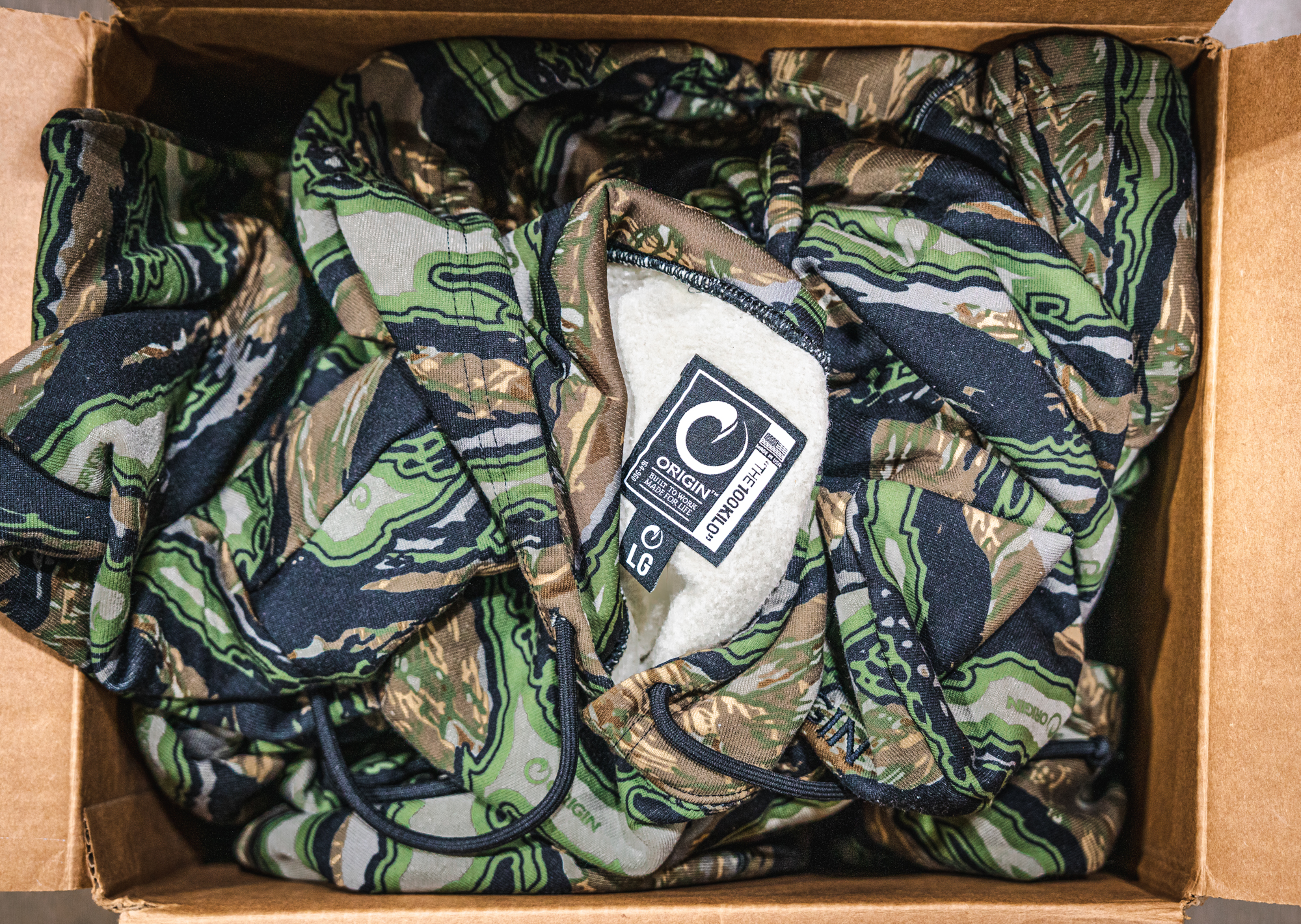
A Waiting Game
Origin’s camo line is available for pre-order (the NYLOC Field Pant will run you $162 before tax), with premium merino wool coming from farms across the U.S., cotton from the Tennessee Delta, and polypropylene from an American company called Repreve that recycles polyester. Origin also makes its own, called PolySynth. Roberts and his wife Amanda, the company’s chief operating officer, take shifts overseeing their North Carolina expansion. Plans call to create what Origin describes as “America’s future factory” on a 105-acre farm in Maine, where consumers can shop and see the factory, including weaving, at work. Meanwhile, Voormi offers customers a similar experience at their shops in Pagosa Springs, Colorado, and Bozeman, Montana, which are attached to their factories.
“It’s not that different than going to Sonoma County and seeing the wine maker and being willing to buy that fancy bottle because there’s a real connection to it,” he says. “In those instances, we see people very excited to get behind it and get a premium product.”
Roberts has no doubt that an innovative, quality hunt line can be built in America with American labor and supplies.
“People think it’s not possible because it would be too cost prohibitive,” he says, “but when you change the culture and change the business model, it’s possible because we’ve always built the best product in the world.”
Ultimately, it’s up to hunters to decide what kind of gear they want, if they like the quality, and how much they’re willing to pay for it.
Read more OL+ stories.
